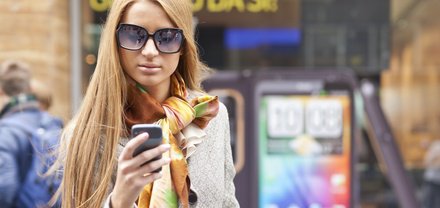
Dive Brief:
- Consumer behavior on digital devices influences 56 cents of every dollar they spend in brick-and-mortar retail stores (up from 14 cents two years ago), reaching a total of $2.1 trillion by the end of this year, according to a new Deloitte Consulting study issued Wednesday.
- Digital’s influence is spreading, though differently across categories, Deloitte notes. Electronics remains the most digitally-influenced category, with 69% of purchases shaped by digital interactions, up from 62% in 2015. Digital’s impact on the grocery, food and beverage category jumped 49% year-over-year, and health and wellness climbed 32%.
- Two-thirds of consumers now prefer a self-directed shopping journey, up from under a third (30%) just two years ago, Deloitte adds. During that time, the number of consumers who say they respond to traditional advertising plummeted from 70% to just under 30%.
Dive Insight:
For its fourth annual report on the “digital divide,” Deloitte compared the digital experiences that brick-and-mortar retailers are delivering to the experiences their customers actually desire. Among other findings, the study revealed that many brick-and-mortar retailers are missing opportunities to reach customers online because they misunderstand digital behavior and underappreciate third-party platforms, and that many retailers are overly focused on competitors rather than on their customers. And, the report shows, change has been swift.
“Any retailer who thinks they can build their own personalized experience to interact with customers anywhere near the extent of major digital platforms and find success may be disappointed with their results,” Deloitte Consulting principal and study co-author Jeff Simpson said in the report. “Their limited interaction with customers — about six to eight transactions per year — limits their understanding of the ‘moments that matter’ in a personalized experience, such as purchase intent and preference. Instead, retailers should more aggressively embrace integration and the native capabilities of the major digital platforms where their customers have already chosen to interact and transact.”
The study also uncovered a fact also going under-appreciated by many retailers — that much digital behavior is no longer restricted mostly to millennials, but extends to older shoppers (who, by the way, still do most of the big spending out there). More than three-quarters (78%) of non-millennials are now using digital devices two or three times during each shopping trip.
“The important thing to remember is that most of today’s buying power still remains with non-millennials,” Lokesh Ohri, senior manager, Deloitte Consulting LLP and leader of customer engagement, content and commerce offerings in the retail practice, said in a statement. “A better idea is to consider all the types of customers, determine how they use digital differently in the purchasing journey and create a broad range of customized experiences for each.”
The store itself still has significant advantages, Deloitte found. More customers are sharing their location and personal details to get better service and perks from a brick-and-mortar store or to receive more personalized emails.
“The majority of consumers’ preferred method of locating, buying and receiving product in-store has been redefined by their online experiences,” Simpson said. “This proves the store has more influence over online purchases than retailers may think.”
Read the original post at Retaildive.stfi.re/
